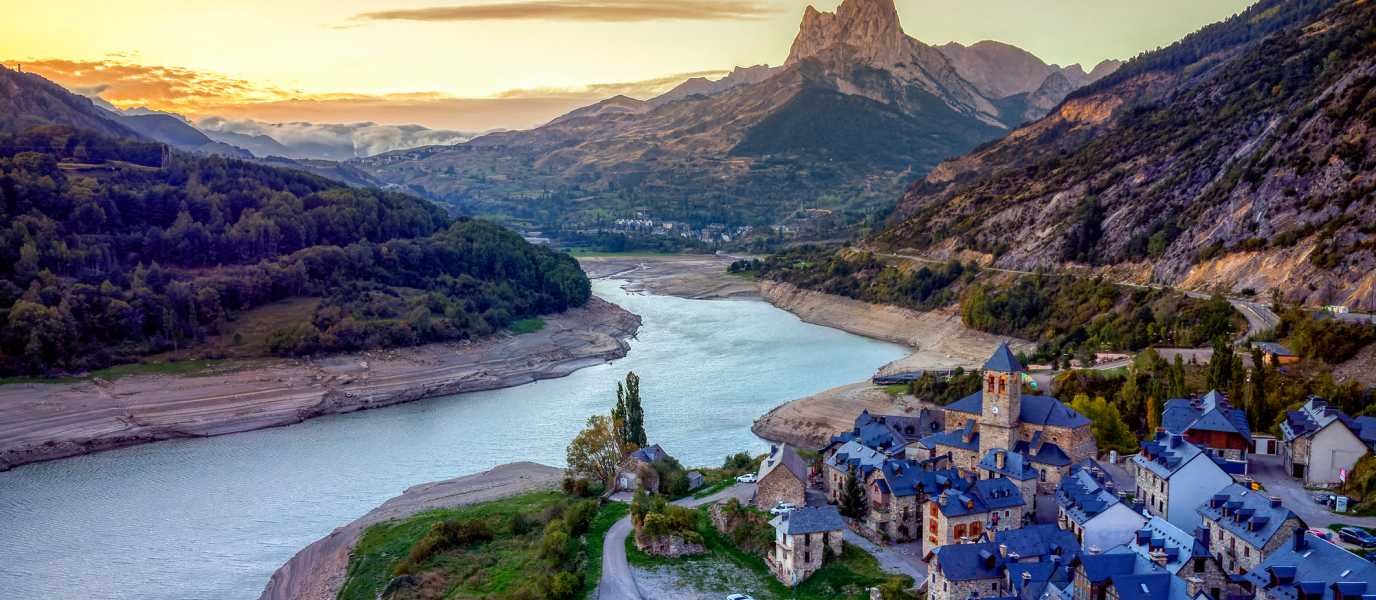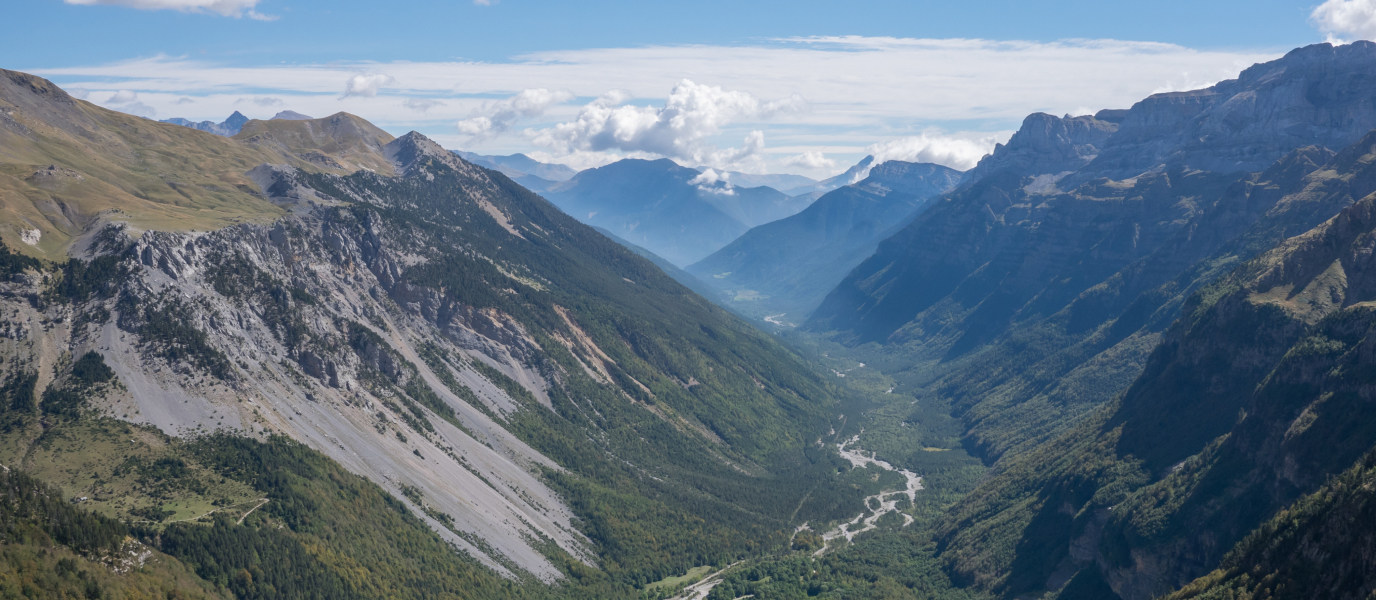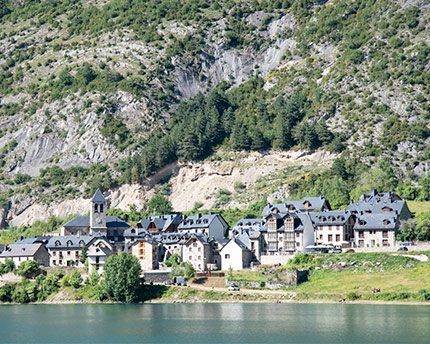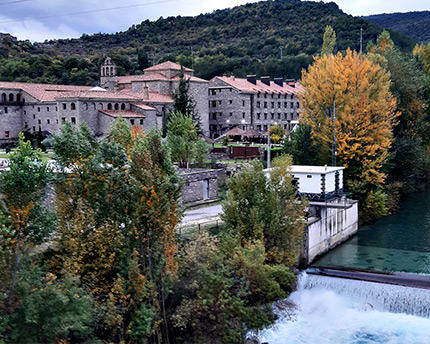Mountain villages, typical Pyrenean architecture, and a medieval past. Huesca is a province full of nature, magic, and contrasts that’s well worth a leisurely stroll through. Find out which villages are the most beautiful in Huesca!
Aínsa
The old quarter of the town of Aínsa, declared a Historic-Artistic Site and one of the most beautiful villages in Huesca, invites you to explore its medieval streets, the walls of its castle, its picturesque Plaza Mayor, and the beautiful Church of Santa María de Aínsa (12th century). This destination is also perfect for hiking enthusiasts. Located between the rivers Cinca and Ara, it’s surrounded by incredible routes to enjoy pure nature nearby.
Alquézar
To get to know Alquézar, you must first step back and admire it from afar. A string of houses and buildings follow one after the other under the majestic Collegiate Church and offer us one of the most beautiful medieval sights in Aragon.
To continue to make unique memories, you should walk through its medieval streets and take special photographs of the impressive landscape that surrounds it from its many viewpoints.
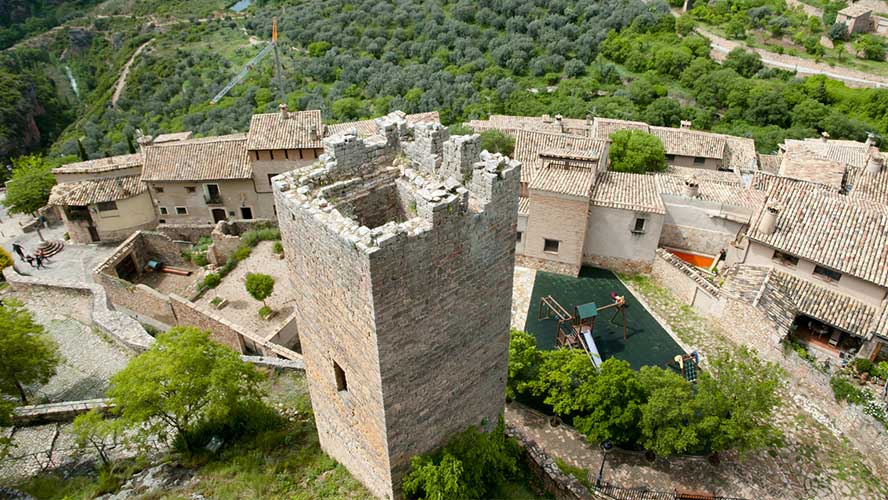
Ansó
With a unique architectural heritage, this small village in the Aragonese Pyrenees is perfect for a quiet stroll while admiring every corner Ansó has to offer, as it has one of the best-preserved medieval town centres in the Pyrenees. Its beautiful streets, its stone, wood, and tile buildings, as well as its typical chimneys have led to it being declared a Cultural Heritage Site.
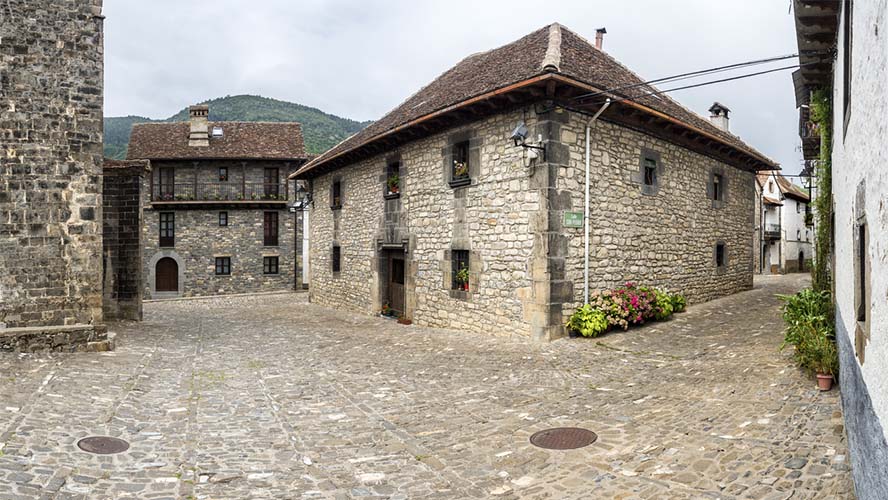
Jaca
Strolling through the streets of Jaca is like taking a journey into the past. With over 2,000 years of history, it has one of the first Romanesque-style cathedrals (12th century) and is a strategic point for pilgrims on the Way of St. James [Camino de Santiago]. But without a doubt, the best thing about this village are three completely different historical buildings.
30 kilometres from the border with France we find the Citadel, a pentagonal fortress built in the 16th century to protect the town.
The Monastery of San Juan de la Peña, whose origins date back to the 10th century and that stands in perfect harmony with the mountain that shelters it, is a gem of Aragonese Romanesque architecture.
The Canfranc International Station, opened in 1928, is a monumental structure declared a Cultural Heritage Site for what it represented at the time: a showcase of Spain for foreign visitors crossing the Pyrenees.
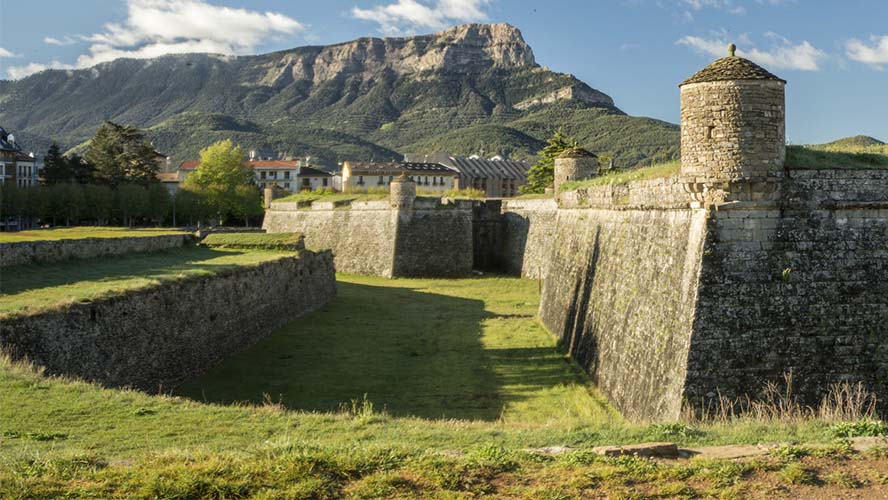
Lanuza
It’s well worth visiting Lanuza and discovering its past; a story with a happy ending. This small village, situated on the slopes of the Pyrenees, was a ghost town for many years. Its inhabitants had to abandon it in 1978 due to flooding fears after the construction of the Lanuza reservoir, and were only able to return in the 90s after discovering that it was safe to live there.
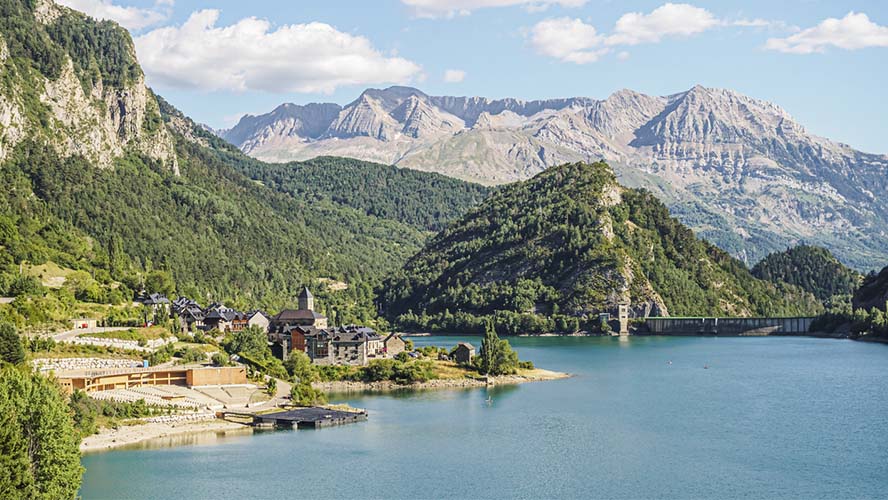
Roda de Isábena
Included among the Most Beautiful Villages of Spain since 2019, Roda de Isábena is the smallest village in Spain (just over 30 inhabitants) with a cathedral. The cathedral is dedicated to San Vicente and is one of the greatest examples of Romanesque architecture in Aragon, and the oldest in the whole community, dating from the 11th century. Its interior, its cloister, its sandstone columns… Every corner of this temple is magical, unique, and special.
Sandiniés
If you visit this small village, you’re guaranteed to enjoy breathtaking panoramic views of the entire Tena Valley from its 1,294 metres of altitude and of one of the most charming villages in Huesca. With just 30 stone houses, which used to be stables, a washing fountain in the Plaza Mayor, and a small parish church, Sandiniés still has all the charm of a small mountain village.
Torla-Ordesa
At the foot of the Pyrenees, as the gateway to the Ordesa and Monte Perdido National Park, we find this small medieval village in Huesca that has fewer than 300 inhabitants. If you visit Torla, be sure to admire its town centre, with its stately Pyrenean buildings, narrow streets, and flower-filled balconies. At an altitude of over 1,000 metres, every corner of the village is surrounded by unique nature.
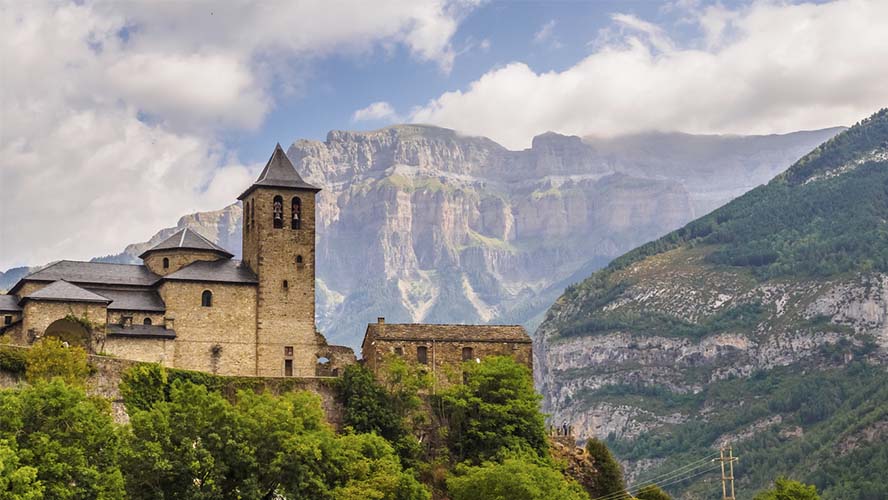
Benasque
Popular with tourists, especially during the winter months, and for its winter and adventure sports, this town is a must visit on any itinerary that features beautiful villages in Huesca. Immersed in nature, the Benasque Valley is the perfect starting point for an excursion to Mount Aneto, which at 3,300 metres is the highest in the Pyrenees, or a hiking route through the Posets-Maladeta Natural Park.
In the town, as well as leisure and restaurants, you’ll find stunning popular Pyrenean architecture in styles ranging from Romanesque to Renaissance.
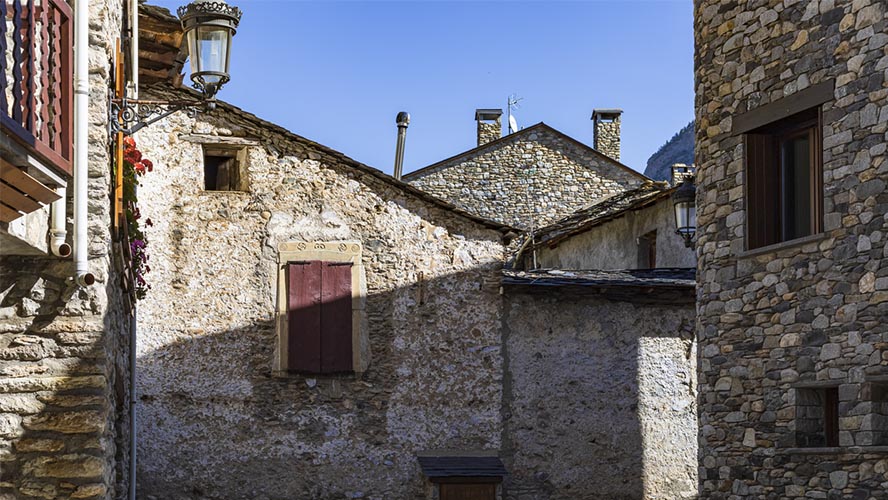
Sallent de Gállego
Guarded by the Foratata Peak, bathed by the Lanuza reservoir and divided in two by the Aguas Limpias river, there’s no questioning the charm of Sallent de Gállego. With just over a thousand inhabitants, its town centre is an important tourist attraction with unique spots such as the Plaza Mayor, located between the river and an old pelota court that has now been converted into a climbing wall.
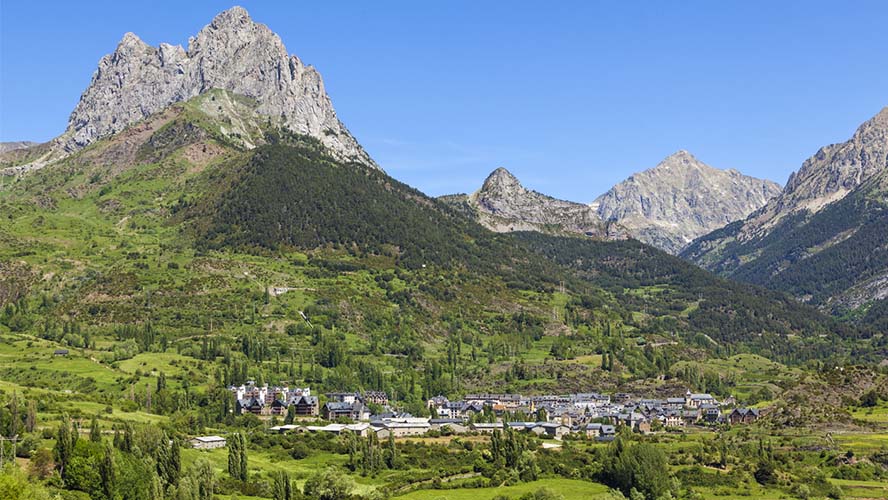
Montañana
Three Romanesque churches, two castles in ruins, and a beautiful bridge, all dating from the medieval period, are just some of the remains you’ll find in the town of Montañana, a village declared both a Historic-Artistic Site and a Cultural Heritage Site.
Cerler
Located on the slopes of Mount Aneto, Cerler is the highest municipality in the Aragonese Pyrenees (over 1,500 metres above sea level). Famous for its ski resort, this town in the province of Huesca is at its most popular during the winter months. However, its old quarter, with its typical Pyrenean architecture, is well worth a visit. This is also true when spring arrives, when the ice melts and nature can be seen in all its glory.
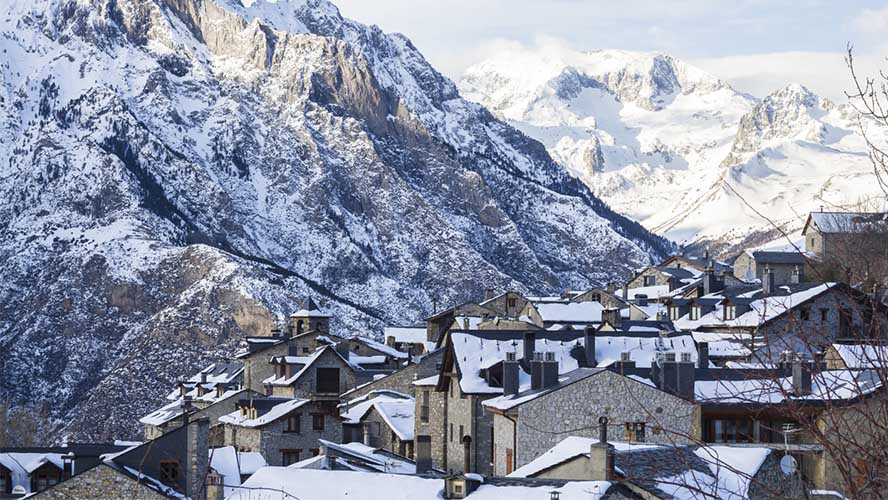
Graus
We end our list of the villages of Huesca with one of the most charming. Its historic quarter has rightly been declared a Historic-Artistic Site. The beauty of its rectangular main square with its colourful façades, or the grandeur of some of its buildings, such as the parish church of San Miguel or the Gothic temple of the Basilica of Nuestra Señora de la Peña, are well worth a visit.
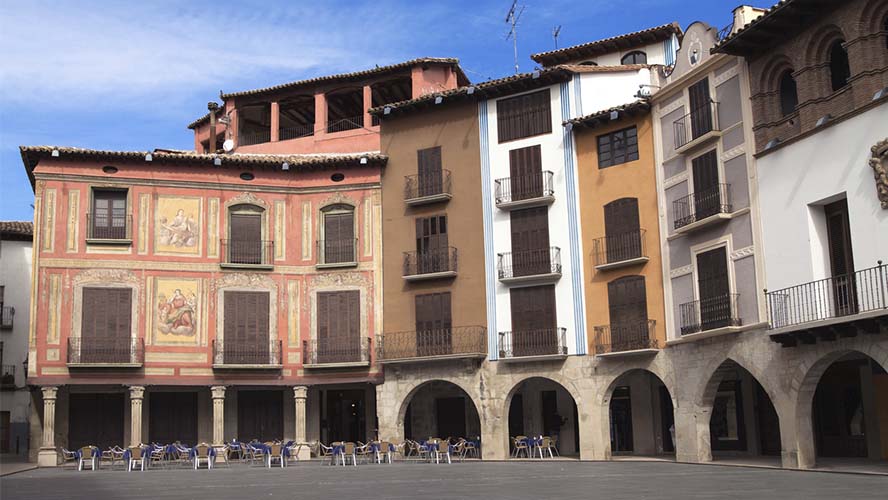
Bielsa
Una de las villas más emblemáticas del Pirineo Aragonés es Bielsa, que junto con su valle conforman un espacio único en el corazón de los Pirineos. A las puertas de la frontera con Francia a través del túnel Bielsa-Aragnouet, la villa de Bielsa se enclava entre los ríos Cinca y Barrosa, rodeado de montañas que alcanzan los 3.000 metros de altitud.
Arrasado en la Guerra Civil, Bielsa ha recuperado su estética pirenaica y es un encantador pueblo de montaña. Tiene una magnífica ubicación para hacer senderismo, descubrir valles como el de Pineta (una de las joyas de Ordesa) o los numerosos ibones que lo rodean, como el fotogénico ibón de Plan.
El Pueyo de Araguás
Un pueblo bajo una mole de piedra. Esa es la imagen de postal del Pueyo de Araguás, una pequeña localidad cercana a Aínsa. A los pies de la Peña Montañesa, la formación rocosa que le hace sombra, El Pueyo de Araguás conserva el encanto de sus callejuelas y casitas, en todo un homenaje a la piedra. Pero este minúsculo pueblo esconde una sorpresa: el Real Monasterio de San Victorián, considerado el más antiguo de España, cuyos inicios se remontan al siglo VI.
Fiscal
Fiscal es una de las puertas de entrada al mágico valle de Ordesa. Emplazado a orillas del río Ara, Fiscal nos ofrece un bello conjunto de arquitectura tradicional. También conserva algunos elementos históricos de interés, como su iglesia de la Asunción, el batán de Lacort (único de Aragón en funcionamiento) o el Pórtico de Jánovas, del siglo XIII, trasladado aquí por un proyecto de embalse finalmente no construido. Senderismo, pesca, piragüismo, barranquismo, BTT o micología son algunas de las múltiples actividades que podrás hacer en Fiscal.
Santa Cruz de la Serós
En plena Jacetania se encuentra el pueblo de Santa Cruz de la Serós, una pequeña localidad declarada Conjunto Histórico Artístico. Este pequeño núcleo en el Camino de Santiago esconde la iglesia de Santa María de Santa Cruz de la Serós (siglos XI y XII), una de las joyas del románico aragonés. Pero la verdadera joya de la localidad es el Monasterio Viejo de San Juan de la Peña , famoso por su curiosa ubicación, encajonado entre las rocas de la montaña, antiguo Panteón Real de Aragón y donde la leyenda dice que habría estado el Santo Grial.




































































